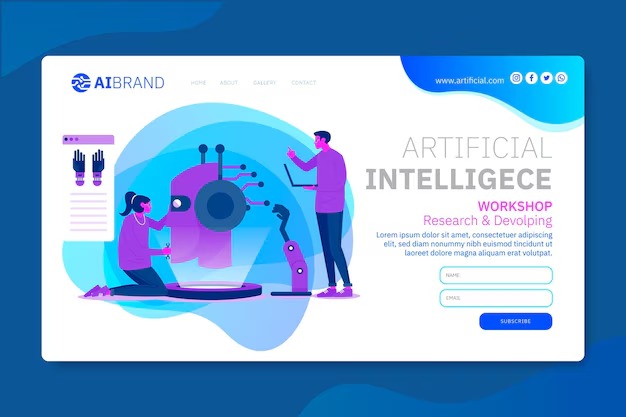
Collaboration and Case Management and Litigation Strategies with LexisNexis Launches CaseMap Cloud for Enhance Legal
Collaboration and Case Management and Litigation Strategies with LexisNexis Launches CaseMap Cloud for Enhance Legal
In the dynamic world of legal practices, effective teamwork and efficient information management are paramount. Today’s professionals require tools that not only streamline workflows but also foster seamless communication among team members. Embracing advanced technological solutions can significantly transform how cases are handled, leading to better outcomes.
Modern platforms offer a variety of features designed to facilitate interaction among legal teams. These systems allow for real-time sharing of insights and documentation, ensuring that every member stays informed and engaged. By integrating innovative applications, firms can adapt to the complexities of their work while maintaining clarity and focus on the tasks at hand.
As the demands of the legal field continue to evolve, leveraging sophisticated solutions can empower practitioners to navigate challenges more effectively. The process of organizing, analyzing, and presenting information becomes more intuitive, ultimately enhancing the ability to build compelling cases. Therefore, investing in collaborative technologies is crucial for those aiming to thrive in an increasingly competitive environment.
Enhancing Legal Team Collaboration Tools
In an era where efficiency is paramount, the importance of effective communication and teamwork among attorneys cannot be overstated. Establishing a productive environment fosters better outcomes, reduces redundancy, and streamlines workflows. Numerous solutions exist to elevate the manner in which professionals interact, share information, and manage cases.
To enhance cooperation within teams, consider integrating the following resources:
- Cloud-Based Platforms: These solutions allow for real-time access to documents and data from any location, ensuring that all members can contribute and stay informed.
- Task Management Tools: Implementing software that tracks assignments and deadlines helps teams maintain accountability and prioritize their work effectively.
- Communication Applications: Utilizing instant messaging and video conferencing tools promotes seamless dialogue, reducing delays in sharing insights or resolving issues.
- Document Sharing Services: Centralizing files in an easily accessible format minimizes confusion and promotes consistency in information distribution.
- Collaboration Workspaces: Creating dedicated virtual spaces for project discussions encourages brainstorming and engagement, enabling team members to contribute ideas freely.
By incorporating these elements, teams can significantly improve their ability to work together, ultimately leading to heightened efficiency and more favorable case outcomes. Adapting to modern collaboration tools can transform how legal professionals engage, fostering a culture of teamwork and shared success.
Key Features of CaseMap Cloud
This section delves into the essential aspects that make this software an indispensable tool for legal professionals. It is designed to streamline processes, enhance team collaboration, and facilitate comprehensive case management, ensuring that all participants can work efficiently towards a common goal.
Centralized Document Management: The platform allows users to store, organize, and retrieve documents seamlessly. This feature enables easy access to case files from any location, fostering a unified approach to managing pertinent information.
Real-Time Collaboration: Team members can work together in the same environment, editing and sharing information simultaneously. This capability reduces delays in communication and ensures everyone is on the same page.
Intuitive Interface: The user-friendly design simplifies navigation, making it accessible to both tech-savvy individuals and those less familiar with digital tools. This ensures a smoother onboarding process and enhances overall productivity.
Task Management Tools: Integrated features for assigning and tracking tasks enable teams to monitor progress effectively. This aspect helps keep the project on schedule and ensures all responsibilities are accounted for.
Advanced Reporting Capabilities: The ability to generate customized reports allows users to analyze data comprehensively. This function can be invaluable for making informed decisions and identifying trends over time.
Secure Environment: With robust security measures in place, the platform ensures that sensitive information remains protected. This feature builds trust among team members who are handling confidential details.
Streamlining Litigation Processes Effectively
Enhancing efficiency in legal proceedings is essential for achieving favorable outcomes and reducing unnecessary delays. By optimizing workflows and leveraging advanced digital tools, legal professionals can significantly improve their operational effectiveness, allowing them to focus on case merits rather than administrative hurdles.
Organizing case information is a fundamental component of an efficient approach. By systematically arranging documents, evidence, and communications, teams can access critical data swiftly, fostering better decision-making and strategy development. Utilizing automation tools can alleviate the burden of manual tasks, enabling legal practitioners to allocate their time to more complex matters.
Collaboration among team members is pivotal in streamlining processes. By fostering an environment where communication is seamless and all parties are informed, the likelihood of misunderstandings or duplicative efforts diminishes. Centralized digital platforms facilitate real-time updates, ensuring that every participant is on the same page, ultimately leading to more coordinated efforts.
Furthermore, analytics and reporting tools can provide insights into case trends and performance metrics. This data-driven approach allows legal teams to adjust their tactics proactively, ensuring they remain responsive to changing circumstances. Embracing technology can transform the litigation landscape, making it more efficient and less prone to unexpected challenges.
Integrating Case Management with Cloud Solutions
In today’s dynamic environment, the amalgamation of case management activities and online resources is increasingly vital for legal professionals. This integration allows for seamless access to documents, efficient communication, and enhanced organization, ultimately fostering a more effective workflow. Harnessing the power of modern technology can significantly elevate operational excellence and responsiveness.
The adoption of cloud platforms offers a versatile framework for data storage, sharing, and collaboration. These digital solutions facilitate real-time updates and remote access, making it easier for teams to stay synchronized regardless of their physical locations. Additionally, this approach ensures that all participants can effortlessly retrieve case-related information, thereby minimizing delays and improving overall productivity.
Furthermore, the scalability of cloud-based systems means that law firms can adapt their resources according to the evolving demands of their cases. Whether handling a small matter or a complex litigation project, integrating case handling with cloud functionalities supports a flexible and dynamic practice environment. This adaptability is essential in meeting client needs effectively while managing time and resources judiciously.
As legal practitioners continue to seek innovative ways to improve their operational processes, the harmonization of case management and cloud solutions emerges as a strategic lever for success. By embracing these technologies, legal teams can enhance their collaborative efforts, streamline procedures, and stay ahead in a competitive landscape.
Real-Time Data Sharing for Efficiency
Instantaneous exchange of information plays a vital role in enhancing productivity within teams. The ability to access and distribute essential data in real-time creates a dynamic environment where decision-making is informed and timely. This seamless flow of information not only accelerates processes but also promotes collaboration among team members, leading to improved outcomes in complex undertakings.
Benefits of Instant Information Exchange
The advantages of immediate data sharing are manifold. Teams can respond rapidly to emerging issues, ensuring that everyone is aligned with the latest developments. This facilitates a proactive approach, reducing the risk of miscommunication and enabling a more strategic focus on key objectives. Enhanced transparency fosters trust and cooperation, essential elements for success in multifaceted projects.
Implementation of Real-Time Sharing Tools
To harness the potential of immediate data sharing, organizations must integrate effective tools that support this functionality. Below is a comparison table highlighting some of these tools and their key features:
| Tool | Key Features | Advantages |
|---|---|---|
| Collaboration Platform A | Document sharing, chat functionality, task management | Streamlined communication, enhanced accountability |
| Collaboration Platform B | Real-time editing, version control, notifications | Reduced errors, efficient tracking of changes |
| Collaboration Platform C | Integrations with other tools, mobile access | Increased flexibility, ease of use on-the-go |
Improving Case Analysis and Outcomes
Enhancing the examination of legal matters and ensuring favorable results are paramount for successful case management. The ability to dissect and interpret information effectively allows practitioners to construct compelling narratives while identifying critical elements that influence decisions. By harnessing technology, professionals can streamline their workflows and foster teamwork, ultimately leading to superior case performance.
Key Benefits of Enhanced Case Analysis
Utilizing innovative tools can significantly impact the depth of case evaluations. Here are some primary advantages:
| Benefit | Description |
|---|---|
| Efficiency | Rapid access to vital information accelerates the analysis process and reduces time spent on manual tasks. |
| Collaboration | Facilitated communication among team members allows for diverse perspectives and collective problem-solving. |
| Insightful Reporting | Comprehensive data visualization tools enable clearer understanding of trends and patterns within cases. |
Strategies for Achieving Positive Outcomes
To secure favorable resolutions, legal practitioners should implement the following approaches:
- Regularly update and refine analytical tools to ensure they align with changing case dynamics.
- Engage in continuous learning about emerging technologies that can enhance case assessment.
- Encourage open dialogue within teams to explore multiple angles during case reviews.
Q&A: Collaborate and litigate with lexisnexis casemap cloud
What is the role of fact management and case analysis in litigation?
Fact management and case analysis are essential for organizing and evaluating the details of a case. They help litigators identify key facts, assess the strengths and weaknesses of their arguments, and develop effective strategies for trial or settlement.
How can Lexis be utilized for effective legal research?
Lexis is a powerful legal research tool that allows litigators to access a vast database of case law, statutes, and secondary sources. It enables them to conduct thorough fact management and case analysis by providing relevant case documents and insights into legal precedents.
What features does Timemap offer to enhance case preparation?
Timemap offers visual tools that help litigators create timelines of events related to their cases. This feature aids in fact management and case analysis by allowing attorneys to present a clear chronology of events, making it easier to understand the sequence and context of the facts.
How important is chronology in presenting a legal case?
Chronology is crucial in presenting a legal case as it helps to establish the order of events. A well-structured chronology allows litigators to effectively manage facts and analyze how they relate to legal arguments, ultimately influencing the judge or jury’s understanding.
What types of case documents should a litigator focus on during fact management?
A litigator should focus on various case documents, including pleadings, discovery materials, expert reports, and deposition transcripts. These documents are vital for thorough fact management and case analysis, providing the necessary information to build a compelling case.
How does effective fact management contribute to successful litigation outcomes?
Effective fact management allows litigators to streamline their preparation process, ensuring that all relevant information is organized and easily accessible. This leads to better case analysis, informed decision-making, and ultimately enhances the chances of a favorable outcome in litigation.
Can you explain how to create a timeline using Timemap for a specific case?
To create a timeline using Timemap, a litigator should first gather all relevant events and dates from case documents. Then, they can input these details into Timemap, which will generate a visual representation that clearly outlines the chronology of events, aiding in both fact management and case analysis.
What role do case documents play in the fact management process?
Case documents play a central role in the fact management process by serving as the primary source of information. They provide the factual basis needed for thorough case analysis and help litigators track developments, deadlines, and critical evidence throughout the litigation process.
How can Lexis assist in identifying key facts during case analysis?
Lexis assists in identifying key facts during case analysis by offering advanced search features that allow litigators to filter through extensive legal materials. This capability helps attorneys locate pertinent case documents quickly, facilitating efficient fact management and comprehensive analysis.
Why is it essential for litigators to have a clear understanding of chronology in their cases?
A clear understanding of chronology is essential for litigators because it helps them construct coherent narratives that resonate with judges and juries. It also aids in fact management by ensuring that all relevant events are accounted for, leading to more effective case analysis and strategy development.
What is casemap® cloud and how does it enhance matter management?
casemap® cloud is a collaborative fact management and case analysis solution that helps legal professionals organize case documents and craft a compelling case story. It provides a holistic view of the entire case, allowing teams to manage facts from intake through settlement or trial.
How does casemap cloud support legal professionals in building a strong legal strategy?
casemap cloud allows legal teams to construct their case chronology by seamlessly integrating facts and details of your case into a powerful visual timeline. This enables them to see connections that might otherwise be overlooked, enhancing their case strategies.
What role does LexisNexis Legal play in conjunction with casemap cloud?
LexisNexis Legal provides access to critical case law and business information, which can be integrated directly into casemap cloud. This integration allows for effective searching and analysis, ensuring that legal professionals have all necessary information available in the cloud.
How does casemap cloud create order from chaos in case management?
casemap cloud creates order from chaos by organizing case documents and managing facts from intake through settlement. Its powerful visual aids help legal teams track critical case details without switching application windows.
What features does casemap cloud offer for constructing a case chronology?
casemap cloud offers tools like textmap and timemap, which assist in constructing your case chronology and converting your timeline into a powerful visual representation. This makes it easier for legal professionals to view the entire case in a structured manner.
In what ways does casemap cloud help in managing facts throughout the legal process?
Using casemap cloud, legal professionals can track facts from intake through settlement or trial, ensuring that every detail is accounted for. This comprehensive management enhances their ability to analyze the case effectively.
How does the launch of casemap cloud impact legal case management?
The launch of casemap cloud has transformed legal case management by providing a collaborative platform that integrates fact management and case analysis tools. This allows teams to work together more efficiently on critical cases.
What benefits does casemap cloud provide for organizing case documents?
casemap cloud helps legal professionals organize case documents systematically, making it easier to access and analyze critical case details. This streamlined approach enhances productivity and supports effective case strategies.
How does casemap cloud facilitate a holistic view of the entire case?
By integrating various aspects of case management into one platform, casemap cloud gives users a holistic view of the entire case. This comprehensive perspective aids in understanding how different elements interact and affect overall outcomes.
What makes casemap cloud a trusted solution for fact management and case analysis?
casemap cloud is recognized as a trusted fact management and case analysis solution because it combines advanced analytics with user-friendly features. This enables legal professionals to increase productivity while effectively managing complex cases.







